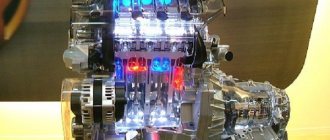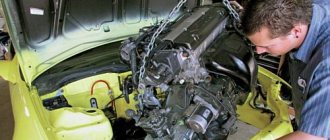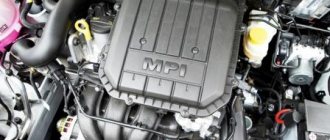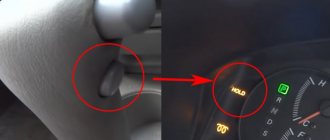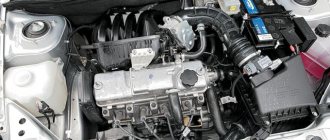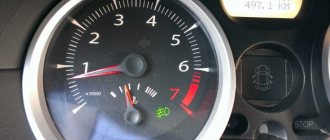It's time to talk about the legendary engine - 1.4 TSI. This is one of the first and most common downsizing motors. At first, he delighted everyone and collected prizes and flattering reviews. And then, thanks to him, car owners lost considerable sums for major repairs, and the cars themselves quickly fell in price. And after all this, it somehow happened that cars with a 1.4-liter turbo engine began to be recommended for purchase. Apparently there was nothing better...
So, in 2005, 1.4-liter turbo engines with a power of up to 180 hp appeared on VAG cars. Among them were not only versions with a single turbocharger, but also with combined supercharging, where the turbine was assisted by an Eaton drive supercharger. Moreover, the first to appear were the twin-supercharged 1.4 TSI engines, and the version with a turbocharger debuted in 2007.
Today we will talk about the 122-horsepower 1.4 TSI engine with the CAXA designation. It was installed on all models of the 5th and 6th generation Golf platform, i.e. Jetta, Scirocco, Eos, Tiguan. Accordingly, for Skoda Octavia, Skoda Yeti, for Seat Leon, Altea, Toledo cars. This engine vigorously pulls the VW Passat of the 6th and 7th generations and the Skoda Superb. This 1.4-liter engine went to the Audi A1 and A3. VAG used it until April 2015.
On our YouTube channel you can watch disassembly of the 1.4 TSI (CAXA) engine.
What is this engine? This is a member of the EA111 family. It has a cast iron cylinder block, a 16-valve cylinder head with hydraulic compensators, and a timing chain drive. The intercooler is liquid cooled and is built directly into the intake manifold. Direct fuel injection. A phase shifter is installed on the intake camshaft. Oil pump without changing performance. These chain motors were replaced with new 1.4 TSI with timing belt drive.
You can choose and buy an engine for Volkswagen, an engine for Seat, an engine for Skoda or an engine for Audi in our catalog of contract engines.
Reliability of the VAG 1.4 TSI (CAXA) engine
Is the 1.4-liter turbo engine reliable? Now we'll figure it out. Note that in this review we will talk about the weak points of the mono-supercharged version. That is, if you are interested in a 1.4 TSI engine with a timing chain drive producing 122 hp. (this is the most common option) - everything important is collected in this review.
You can select and buy a supercharger for the 1.4 TSI engine in our catalog of contract engines.
Bottom line
The VAG TSI family engines are good engines that keep up with the times; all technological solutions used in these power units are dictated by modern realities. Now, when efficiency and environmental friendliness play a very important role in the automotive industry, creating a good engine that meets these factors is not so easy, especially when it comes to powerful power units. VAG engineers coped well with this task, bringing to the market powerful and technological solutions that meet all modern standards and have excellent speed characteristics.
Cars with TSI engines, although not without drawbacks , among competitive brands they occupy a leading position, because they are ideal options in terms of power and efficiency. Yes, the complexity of the design imposes certain restrictions on the operation of machines with TSI engines. However, if you know about all the technical nuances of these motors, carry out timely diagnostics and maintenance, then these motors will last a long time and will not disappoint the owners, and the high power will be an excellent addition to an economical everyday car.
Did you like the article? Share on social media networks:
Turbine
The 122-horsepower 1.4 TSI engine is equipped with a Mitsubishi TD025M2 turbocharger. He took part in a service campaign aimed at eliminating a stuck wastegate axis. Those. the throttle usually stuck in the open position, which naturally caused the engine to stop pulling due to a noticeable lack of air. Sometimes the damper remained closed, after which the ECU complained about overblowing.
You can check the mobility of the damper using a hand-held vacuum pump: you need to connect it to the damper actuator. Based on the mobility of the rod, conclusions can be drawn about whether the damper is jammed. Well, if the turbocharger is removed, then you just need to manually “pat” the valve.
The problem is that the axle bushing wears out, causing play to occur, which then leads to jamming of the damper.
To solve the problem, the manufacturer offered the entire cast iron part of the turbine (03C 198 722), because It is into this that the bushing of the damper axis is pressed.
Services offer repressing of a worn bushing. Such repairs are much cheaper than replacing the hot part of the turbocharger. Well, folk craftsmen use a limiter that does not allow the rod to open the valve to the maximum, because Usually it is in this position that it gets stuck.
The turbine rod itself is controlled by the N75 vacuum valve. A bypass valve N249 is installed on the cold part, which allows overly inflated air to flow around. As a rule, no problems occur with them.
The cartridge of this turbocharger is cooled with antifreeze. Sometimes there is a leak of antifreeze from under the pipes. When antifreeze evaporates on a hot snail, an unpleasant odor is felt in the cabin, and traces of boiling away remain near the tubes. To eliminate the leak, you need to replace two O-rings (WHT 003 366).
Overall, the turbocharger of the 1.4 TSI engine is very reliable. There are cases when oil is squeezed out into the intake manifold from under the compressor impeller. This may occur because the tube through which the oil should drain from the cartridge is clogged. In some cases, this is due to the fact that the labyrinth oil separator is clogged. It is located inside the front engine cover. Well, when the engines are running, the turbocharger begins to “snot” and squeeze oil into the intake due to a clogged catalyst or air filter.
You can select and buy a turbine for the Volkswagen 1.4 TSI engine, a turbine for the Seat 1.4 TSI engine, a turbine for the Skoda 1.4 TSI engine in our catalog of contract spare parts.
Intake manifold
The liquid cooler installed in the intake manifold sometimes cracks, after which antifreeze enters the cylinders. As a rule, the leak is small and the driver first becomes aware of it by the decreasing coolant level. And during the inspection, no leaks will be found.
Therefore, you need to immediately remove the intake manifold - the leak will be detected there. If you delay in resolving the issue, the leak will become more intense. Fluid can accumulate in the intake and in certain situations can enter the cylinders, leading to water hammer.
To solve the problem, you need to change the radiator-intercooler in the intake manifold.
You can select and buy an intake manifold for the Volkswagen 1.4 TSI engine, an intake manifold for the Seat 1.4 TSI engine, and an intake manifold for the Skoda 1.4 TSI in our catalog of contract spare parts.
Second generation EA211 and EA888 GEN.3
Since 2013, the line of TSI engines has been updated; many components that were previously considered fragile have been redesigned. So the main “Achilles heel” was the timing chain.
It didn’t last long, especially in the 1.2 - 1.4 variations, it simply stretched and tore during a run of 50 - 70,000 km (from high load and high torque). Now they have removed it and installed a timing belt, they don’t last much longer, but it is easier to change and easier to change, the difference in operation is about three times. In 1.8-2.0, the chain mechanism was significantly strengthened, the strength doubled.
The engine heating system was also redesigned; the predecessor (EA111 and EA888 GEN.2) took a very long time to warm up. Now the problem is almost solved. There have also been improvements to turbines. However, the oil burner remains; oil consumption can reach up to 5 liters per 10,000 km, so it is important to monitor the level.
Surely everyone who was thinking about buying German Skoda or Volkswagen cars thoughtfully looked at the abbreviation of the TSI engine type, thinking about what is special about this power unit. In the vastness of Russia there are still many misconceptions about this. Some believe that this type of engine runs on diesel fuel, because with a smaller specific volume, it produces a much greater power value compared, for example, with a simple turbocharged engine. But in reality everything is different. The TSI engine is far from a diesel.
injection pump
The 1.4 TSI engine is equipped with direct injection. The entire fuel system does not raise any questions. But there are known cases when, on runs under 300,000 km (sometimes much earlier), wear of the fuel injection pump rod appears, which leads to fuel leakage from under the oil seal that seals the rod.
Of course, the fuel flows into the cylinder head and is mixed with the oil. One of the symptoms indicating fuel getting into the oils is an error in over-enriching the fuel mixture. Those. When the engine is running, fuel evaporates from the hot oil. Gasoline vapors enter the intake through the VCG system and thus enrich the mixture. This is a well known problem with this engine. To eliminate it, simply replace the fuel injection pump and before starting the engine, be sure to activate the procedure for de-airing the fuel system.
In addition, there are rare cases of the injection pump rod breaking off. In this case, naturally, the fuel also gets into the oil. And also the required fuel pressure is not achieved: the engine takes a long time to start, pulls poorly, and errors occur in the fuel system.
You can select and buy a fuel injection pump for the Volkswagen 1.4 TSI engine, a fuel injection pump for the Seat 1.4 TSI engine, a Skoda 1.4 TSI fuel injection pump or an Audi 1.4 TSI fuel injection pump in our catalog of contract spare parts.
Camshaft supports
Another problem lurked in the camshaft supports. A check valve was used in the front camshaft support number 06H103144J. It is needed in order to ensure the fastest supply of oil during a cold start of the engine and the rapid exit of the phase regulator to operating mode. And this simple part of a steel ball, a spring and a plastic case with a mesh filter failed. The remaining plastic tore the filter, and debris began to “walk” through the system, getting into the camshaft lubrication line and into the phase shifter. The latter usually could not survive this. Of course, the chain could slip or even break, damaging the valves and cylinder head.
This defect could be encountered even with low mileage; sometimes 40-60 thousand kilometers of city trips were enough. A solution was found: new meshes appeared on sale, and the valve body in the new supports became metal.
Injectors
The direct injection injectors of the 1.4 TSI engine serve very well, but carbon deposits from low-quality fuel and questionable additives in it lead to the formation of carbon deposits near the nozzle. Improper fuel atomization leads to engine shaking at idle and under load, and misfires also appear, which can be caused by carbon deposits on the intake valves. In some cases, injectors can be washed with a special product, but in general it is safer to change them.
You can select and buy injectors for the Volkswagen 1.4 TSI engine, injectors for the Seat 1.4 TSI engine, Skoda 1.4 TSI injectors or Audi 1.4 TSI injectors in our catalog of contract spare parts.
Problems
Many owners are upset by the fact that their car has a TSI engine. Among the entire line of engines (1.2, 1.4, 1.8, 2.0, 3.0), some internal combustion engines can cause a lot of trouble for their owners. Among the main problems:
- oil burning, which can begin after 10 thousand km;
- stretching the chain.
The problems of TSY motors are so significant that they require consideration in a separate article.
The appearance of German cars with a new line of TSI engines, or, a little earlier, TFSI, is often the subject of controversy, the main issue of which is the engine. What is a TSI engine and what innovations are used in its design will be described below, not forgetting to mention the problems associated with the operation of TSI engines.
Main components of the TSI engine
The difference between TFSI and TSI engines comes down to the introduction of a second turbine, but Audi engines are called TFSI, although they have a second turbine.
The difference from other gasoline engines lies in the decoding of the TSI abbreviation in the engine name. The predecessors of TSI were designated as TFSI - Turbocharget Fuel Stratifled Injection - turbocharging with stratified (or layered) fuel injection. These engines appeared as a result of equipping the injection engine with a turbine for pumping air. Later, Volkswagen introduced a different designation for its engines - TSI (Twincharget Stratifled Injection) - changing the decoding due to the improvement of the turbocharging system by installing another turbine, driven slightly differently than on other similar units. Now the abbreviation TSI means that the engine has twin turbocharging and stratified injection. As you can see, the difference between TFSI and TSI engines comes down to the introduction of a second turbine - Volkswagen has patented a new name, although similar engines installed on Audi are still called TFSI, although they have a second turbine.
Oil separator
The 1.4 TSI engine has a very successful crankcase ventilation system. There is no diaphragm valve here. Instead, there are throttling ones, i.e. controlling the suction of gases, valves assembled in a tube (03C103175G). It is located on the valve cover. On engines with high mileage, it is worth inspecting the channels from the front engine cover through the tube from the valve to the intake manifold. Air leaks through cracks in them can lead to misfires.
It happens that the VKV valve makes a rattling sound when worn or dirty.
The oil separator works well. It is hidden in a completely unexpected place - under the timing cover.
Types of boost
The TSI engine can only have a turbine. Control is carried out using a bypass valve (electric or pneumatic). For example, if there is excess pressure in the exhaust manifold, the flow of exhaust gases will pass past the “hot” part of the turbine. The peculiarity of such a system is the method of air cooling. A liquid-cooled intercooler is installed in front of the intake manifold. The air passes through the honeycombs, inside which coolant circulates. Cooling is activated by an ECU command, which turns on the pump, thereby starting coolant circulation in the air cooling circuit.
On a car with twin turbocharging, the engine has an air-cooled intercooler.
Valve train chain
1.4 TSI engines are notorious for the wear of the timing chain: it barely survived the warranty period, in general it did not last more than 80,000 km. The problem appeared by 2008-2009 in all markets. The VAG concern did not really acknowledge the problem, did not organize a large recall campaign and blamed the chain supplier for everything. On warranty motors, the problem was solved under warranty. Well, if a non-warranty motor died due to a chain jump, the manufacturer would compensate some of the repair costs.
Also, this engine can easily cause a meeting of pistons and valves due to the poor design of the hydraulic chain tensioner. The tensioner here does not have a stopper, so it is easily pressed in and allows the chain to sag. Parking the car in reverse gear or trying to start the car while towing results in the tensioner being pressed in and the chain jumping.
On surviving early 1.4 TSI engines, when chain rustling and errors due to inconsistency of signals from the camshaft and crankshaft sensors appeared, the entire timing drive had to be replaced with a modernized one. The updated kit appeared in May 2012.
There are no marks in the timing drive; special clamps are used to correctly align the shafts. And you can change and update the timing drive in one shift.
Various timing drive kits
The upgraded timing drive kit includes literally everything: from the chain itself to the phase shifter. In many cases, replacements were made under warranty. In general, the original kit costs about $550. There are non-original proposals, but they do not include the intake camshaft star, that is, the phase shifter.
The manufacturer updated all gears in the timing drive. In the latter version, on mono-supercharged 1.4 TSI engines, the crankshaft star should have 19 teeth (previously 18), and the row for driving the oil pump always has 18 teeth. Accordingly, a new chain and new camshaft sprockets go to the new crankshaft sprocket.
The design of the hydraulic tensioner has not changed fundamentally: there is no counter-travel stopper, and an internal spring resists indentation.
Additionally, on engines with the designation CAX*, it is necessary to replace the bushing chain of the oil pump drive with a new gear one. That's another $150. Motors with numbers from CAX_011200 to CAX_102045 came off the assembly line with an oil pump bushing chain. It needs to be changed.
With engines with the designation CAX* from early batches, it often happens that until the front cover of the 1.4 TSI engine is removed, it is not clear what is installed there in the timing drive.
If the entire timing belt set has been replaced, then you can operate the engine for a long time without worrying about anything. And the chain stretch can be assessed in the diagnostic software using the camshaft adaptation parameter. If the camshaft position is less than zero and goes beyond -2°, then it’s time to change the chain, its tensioner and guides. Already at -1.5° the chain will rustle for a couple of seconds after starting the engine. The updated chain can travel about 200,000 km.
Actually, on updated and modified 1.4 TSI engines with one turbine, the timing chain is considered the only weak point. Everything else, subject to normal maintenance, will run smoothly even after 200,000 km.
The principle of operation of a turbocharged engine
The presence of turbocharging did not introduce significant changes into the combustion organization process. The engines use several methods to improve efficiency through the inherent advantages of direct injection:
- creating a stoichiometric homogeneous mixture, which is very similar to injection into an MFI type manifold, but with a significant reduction in condensation losses;
- working with a lean homogeneous mixture while increasing the throttle opening more than optimal, that is, with excess air;
- layer-by-layer mixture diluted with exhaust gases and excess air.
The latter is ensured by a special injection mode at the bottom of the piston with swirling flow and supply of a normal mixture to the spark plug electrode zone, when in the rest of the cylinder the mixture is extremely lean and unsuitable for ignition.
Turbocharging provides accelerated filling of the cylinders with air, but does not work well at low speeds due to insufficient spin-up of the turbine.
Therefore, many engines in the line use a double supercharging system, when first a mechanical rotary compressor driven through a belt from the crankshaft pulley is connected to an electromagnetic clutch and an additional bypass valve.
Switching between different modes of this combination of two compressors is controlled by the electronic engine control unit. It also controls the use of different direct injection modes, depending on the nature of the load and the required torque.
Maslozhor
The 1.4 TSI engine has never suffered from oil burns, although many examples need a small top-up of oil between changes. Replacing the piston group is necessary only in exceptional cases on “favorite” engines.
Piston group resource
There are known cases of pistons breaking on 1.4 TSI engines. This problem occurs due to detonation caused by low-quality fuel, but more often by carbon deposits on the intake valves. The latest version of ECU firmware, as well as preventive cleaning of intake channels and valves, help prevent detonation.
Problems with fuel atomization by injectors result in pistons burning out. But such cases are few.
We have listed quite a few weak points of the 1.4 TSI engine, but in fact this mono-supercharged engine in the most common CAXA version is really very reliable. Many engines have traveled more than 500,000 km. During this time, you will have to fork out for 1-2 timing chain replacements. But in general, with good oil and fuel you will only need to change consumables.
You can choose and buy an engine for Volkswagen, Audi, Skoda, Seat in our catalog of contract engines.
Here, using the links, you can see the availability of specific Volkswagen cars, Seat cars, Skoda cars or Audi cars at the dismantling shop and order auto parts from them.
What to do with a car from the “problem” group?
The original pistons for VAG were produced by Mahle. But it is not the only manufacturer of the piston group for these engines. Kolbenschmidt makes a good replacement for AE pistons - the KS40251600 series, also with oil drain slots.
In the latest revisions of this piston, the oil scraper ring is set, pay attention to this. There is also a version for a 23 mm piston pin KS 40 761 600, although it is less common. If the pistons are old, then you also need Mahle 02814N0 or Mahle 03319N0 rings.
Thus, if your engine has a 21 mm piston pin, then the best way to solve the problem is to install KS40251600 or AE pistons, if you can find them at a reasonable price. Usually it starts from 11 thousand rubles, but options are possible.
If the engine has piston pins with a diameter of 23 mm, then you will either have to limit yourself to BS pistons, or look for the very rare KS 40 761 600.
If the piston burns out due to jammed compression rings, then you will have to sharpen the block, fortunately it is cast iron, and the piston group has repair dimensions. True, pistons 40761610 and 40761620 - the first and second repair sizes, respectively - are significantly more expensive than the base ones. So lining a cast iron block is a very common way out of the situation. You can even get by with used pistons with modifications, since the pistons themselves are strong. And there are a lot of “orphan” pistons in nature: they are replaced en masse.
